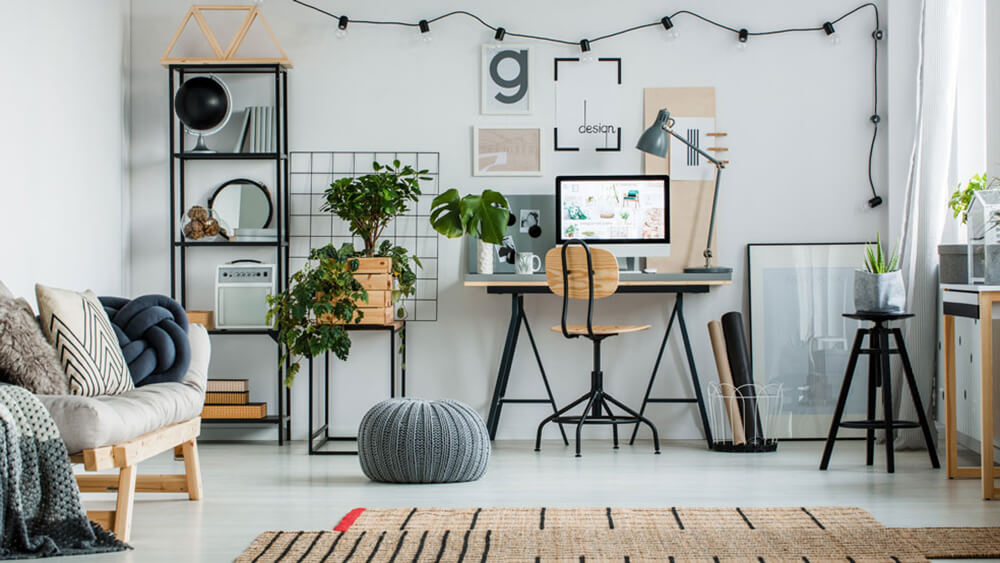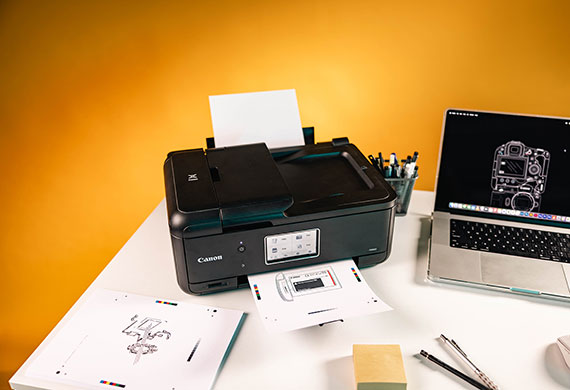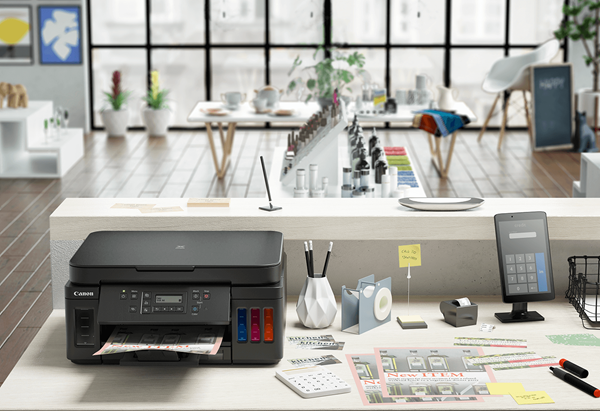- Top Tips For Setting Up A Home Office In 2021
-

Working from home doesn’t mean sitting perched up in bed or hunched over on the lounge. It’s time to move away from the kitchen table and into a proper working space.
According to the most recent survey into work trends from the Australian Bureau of Statistics, almost a third of all employed Aussies regularly work from home and, thanks to technological advancements in the last decade, from cloud-based networks to chat programs like Zoom, Google Hangouts and Slack, working remotely has become so much easier.
Working from home definitely has its perks, from pyjamas-as-uniform to pumping your favourite tunes as loudly as you want without Jim from marketing’s disapproval. However, you’re still going to need a dedicated workspace to get things done and, for those of you thinking a home office requires only a lounge and a laptop, well, you’re doing it wrong.
Repeat after me: “technology that’s not reliable is a liability”.
The most important consideration when setting up a home office is the tech you fill it with. More often than not, you won’t have an IT help desk to solve your meltdowns, so you need to make sure the gadgets you’re using are reliable and compatible with all your devices.
Whether you work regularly from home or just from time to time, it’s important to have a space in your home that’s ready to go when it comes to device connectivity.
These office necessities have to make your work easier, not harder, so look for products that work seamlessly together. The PIXMA Endurance G Series (G3600, G4600, or G6060), for example, does that with features that include mobile printing and scan functionality via Wi-Fi or Cloud. Look for products with extra ink storage, as well as pigment and dye inks, that store longer and print high-quality images and crisp text.
WE RECOMMEND…
A printer that’s so much more than a printer
WHY: The Canon Pixma Endurance G Series printers are made for both business and creativity. With wireless printing, you don’t need to hook them up to your computer and you can print straight from your mobile. They also come with enough ink to keep you printing for up to 2 years, so whilst you might pay a bit more up front, you’ll save on ink in the long run. TIP: depending on your personal situation, buying a home printer for work purposes can be partly tax deductible.
The digital personal assistant
WHY: Because we now live in the future, there are several cloud-based voice services you can turn into your PA that will play music, make calls, set alarms and timers, ask questions, check your calendar, weather, traffic and sports scores, manage to-do and shopping lists, control compatible smart home devices, and more.

Setting up a home office can be a little overwhelming, but the key to creating a Pinterest-worthy space that is equal parts stylish to functional is to have a vision. Don’t worry, this doesn’t mean you need to start knocking down walls or painting, but rather, look at ways to bring in pops of colour and life to the space in other ways.
Angela Wright is a colour expert. Her book The Beginner’s Guide to Colour Psychology developed scientifically-tested theories of colour, which suggests the way colours contribute to mood and productivity.
Many agree that blue is a great colour for productivity, with its calming qualities, but this doesn’t mean you need to have an office with 50 shades of blue. Instead, Wright says, it’s more important to use colour to create harmony in a space.
The biggest consideration when choosing the colours to decorate your home office is to think about what qualities you want to possess in your job. If you need to stimulate your mind, blue is your go-to, however, if you work in the creative space Wright says yellow stimulates your ego and makes you more optimistic. Choose red if your role requires more hands-on work, but if you need a sense of stability and calmness, green will help achieve this.
WE RECOMMEND…
Add a little greenery
WHY: Studies into the science behind the effects plants have on the workplace concluded that the addition of a green friend can help reduce stress, increase productivity and clean the air around you. Check out Devil’s Ivy which adapts to a variety of climates or a Peace lily which doesn’t need a lot of light and is forgiving to those chronic overwaters out there. And if you can’t be trusted with the real thing, you can use paper craft to do the job with these 100% free beauties at the Canon Creative Park.
A fishy friend or two
WHY: Working at home can mean you’re a little removed from small talk waiting for the kettle to boil so why not adopt a fishy friend? A study from the Environment and Behavior journal found that even just looking at natural environments, like an aquarium can have calming and stress-reducing effects on humans. The safest species would be the Betta fish who are a low maintenance fish or the ultimate beginners' pet, the goldfish.

James Zheng, a qualified chiropractor at Spine and Health in Sydney’s northern suburbs, sees all too often the effects of poor posture and not sitting properly for long periods of time.
“It is important to sit in an office chair correctly when working from home as it provides your body with the necessary support that it needs,” Zheng tells news.com.au.
“Prolonged sitting on the lounge can place enormous tension on the muscles and ligaments surrounding your spine as increased pressure causes the tissue to overstretch, which can lead to serious spine injuries.”
He also explains that using a laptop away from a desk or table means our necks are prone to rest in a slouched position and stresses the importance of ergonomic furniture.
“For every inch our head goes forward, the amount of pressure in our necks doubles. This makes the muscles and joints of your neck become weak, while the musculature surrounding your neck gets really tight,” he says.
“Research has shown that ergonomic furniture can improve productivity due to improved comfort, decrease in injury rates at the workplace, and increase the quality of work.”
Want some tips on how to improve your posture at your desk?
Zheng advises setting your chair’s height so that your hips rest higher than your knees, your elbows sit above your wrists and don’t cross your legs.
WE RECOMMEND…
The right chair
WHY: When you’re trying to remain motivated you will need a seriously comfortable chair that adjusts to your body and makes you want to stay put. Temple and Webster have an amazing range of ergonomic chairs that will add a touch of style behind your desk.
The standing desk
WHY: And when even that starts to slip, make sure you’ve also got a flexi desk. Offering the versatility to shift between sitting and standing, these futuristic desks are your ticket out of eight hours on your bottom.
Don’t be afraid to experiment with your home office by making it a reflection of you and your work and a separate space to the rest of your home.
Author: Dominque Hermo
This article was originally published on https://www.news.com.au/

Explore the world of printers with our comprehensive guide. Discover various types of printers and find your ideal match. From high volume to photo printing, we'll help you navigate the options and choose the ideal printer for your needs.

Does your printer drink too much ink? Follow our top tips to get the most our of your Canon printer with Genuine Canon Inks.

Geneva from Collective Gen shows you how to create an easy Tasseled Hanging Photo Display to showcase your favourite memories in your home. Make a statement in your house using your favourite pictures and only a few materials.